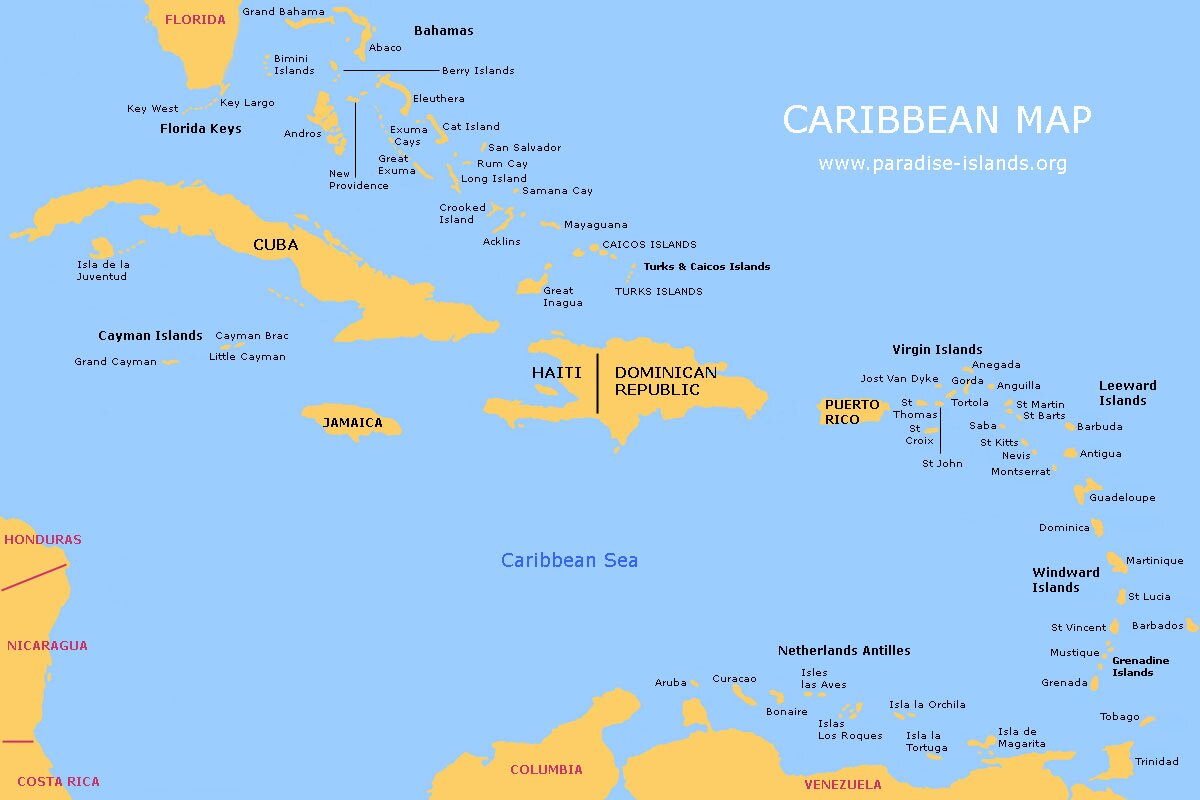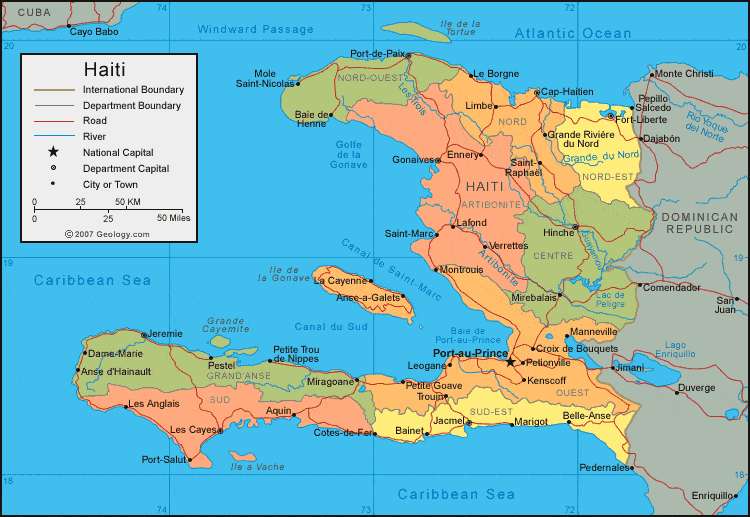All work and no play makes international relief volunteers dull boys and girls, so Hands On gives their volunteers every Sunday off to recover from the week and enjoy some of what Haiti has to offer. For most people this means beaches! Of course there are the waterfalls and cute coastal towns as well, but I’ll have to get to those a little later.
But before I can talk about the play, let me talk a little more about some of the work I’ve been doing here.
The first Saturday I was in Haiti I volunteered to work for HODR’s Disaster Risk Reduction education campaign. In my opinion this is one of the best and most effective things HODR is involved with. The program is to get together a group of Haitian teachers and teach them about the facts of earthquakes and how to respond to one. Basically we’re trying to get across the idea that earthquakes are a natural and inevitable occurrence and that the best response to them is to not run around screaming.
Coming from the Northwest, an earthquake prone region of the US, I had been trained from early childhood to drop and hold, find a stable doorway, or stand in an open outdoor area during an earthquake. I was also taught what an earthquake is: the movement of tectonic plates, sitting upon the earth’s crust. In Haiti, both the theoretical and practical education about earthquakes was virtually non-existent. Of course, it doesn’t help that so many children go uneducated anyway.
So, because of this lack of education, I found myself headed out in a tap-tap the first Saturday of my volunteer time here for a DRR (Disaster Risk Reduction) event at the newly completed school HODR had built in a town called Jacksonville, thirty or forty minutes west of Leogane. Of course, we would show up at the same time that another NGO arrives in town to do a sanitation education. And, of course, their event would involve loud music and puppets to get the attention of the village and especially the children. Ours was a bit more dry and lengthy and aimed at the teachers – we were outgunned – thus we were bumped to a later slot and the hygiene and sanitation education went ahead first.
This was all fine by me as we got to be a part of the dancing and watch the puppet show. They even had a giant Marti Gras style puppet that one person gets inside to be the feet and someone else runs the arms with sticks.
We introduced ourselves and HODR, though most of them new of us from the construction of the school, and then we dove into the material. It went well enough. It’s hard to start something like that just around lunch time and ask people to pay attention while hungry and after a lot of crazy music and dance. We needed more interaction and attention grabbing within the event, but the material is sound.
We first discussed the causes of earthquakes. We discussed why they cause damage (the ground moves!). We also talked about how you measure them and most importantly what you can do to protect yourself in the case of an earthquake occuring.
It was surprising how little these Haitians knew about earthquakes, even after having suffered through so many recently. It was important to let them know that earthquakes are natural, inevitable, and that we need to be on guard and prepared to deal with them.
To that end we introduced the assembled educators to the earthquake drill. Emphasis in the Haitian version is more on getting outside of the building instead of the drop and cover that US school children learn – most of the buildings here pancaked downward thanks to their overly strong cement roofs and weak brick walls, so no school desk would protect a child. Instead we taught that the teacher and children should calmly, but as quickly as possible, exit the building and head to a safe spot.
It only took about three tries for them to stop running and pushing and screaming.
These drills matter immensely and will save lives. It’s always a game of sorts to children in US schools, since we do it all the time, it’s become second nature and an excuse to get out of the building. We told the assembled Haitians of one case that illustrates just how important preparedness is: The difference between the Chilean and Haitian earthquakes of this last winter.
On January 12, 2010 a 7.0 magnitude earthquake hit the Leogane area of Haiti and over 200,000 people died. On February 27, 2010 an 8.7 magnitude quake hit the Maule region of Chile killing 487. Why did an earthquake 70 times stronger kill so many fewer people? The answer obviously can deal with building standards, which was the first thing the Haitians pointed out, but also has to do with preparedness. Chile is prone to earthquakes. They happen every year in Chile. The largest ever recorded was in Chile in 1960, a staggering 9.5. So Chileans know how to deal with earthquakes. Children do earthquake drills constantly at school and communities are organized to respond to the tremors. Haitians haven’t had an earthquake in 200 years, since the last time Port-au-Prince was levelled and so had let their guard down. We told the Haitians they need to be vigilant and ready to act.
And so we drilled them. We made sure they had the drill right and then we told them to teach it to their students and their neighbours and to spread the word about the proper response to an Earthquake. An important message to be sure.
We also talked to the teachers about the way a catastrophic event like an earthquake can cause trauma in children and how they can use song, dance, art, and other creative means to help children express that trauma and overcome it.
So even if we started late and the meeting lasted a little too long (the format of the program needs to be tweeked a little bit), the message communicated was important and I think most of the Haitians realised that and took it to heart.
So at this point in time I had done rubble work and I had worked on disaster risk reduction education. As I write I’m working on a couple of other projects that I will write about soon – a YouTube “Life in a Day” video contest and building shelters for those who have lost their homes to the earthquake.
Before I sign off though, I’d like to say – Haiti has some great beaches and I’ve been lucky that the last two Sundays I have been off to visit one in particular where the water is warm and clear, the lobster is fresh and gigantic (not exactly cheap, but cheap enough), and the beer is cold. A good way to relax with other volunteers and to scoff at the NGOs that show up in their 80k dollar land rovers while we come on tap-taps (the local pickup truck transports) so that our organisation can devote more of its resources to projects and less to our living standard. I mean really, do you need that extra land rover? Maybe you do, but maybe you don’t. I think too many organisations spend too much money on the wrong things. But more of that rant later.
For now, I hope you enjoy the pictures I finally got a chance to load up (too many for one blog post) and I’ll write more soon about the shelters, YouTube video and my upcoming trip to Jacmel this weekend.





